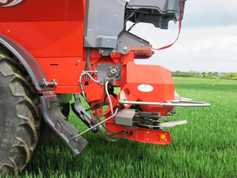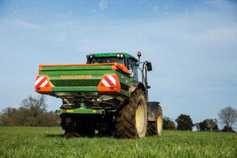Weighing cattle: Although it is a very busy time on farms, with most farmers cutting silage or gearing up to cut silage, it may still be worth thinking about weighing stock. Cattle that have been out at grass since March have been grazing for approximately 120 days now. Waiting until the autumn or sale day to weigh cattle is a flawed policy and a missed opportunity. Weighing now will leave you in a position that you can still make up for lost weight gain by addressing the problem now. Steers and heifers at grass should have an average daily liveweight gain of about 0.8kg-1kg/day. Bulls will have a liveweight gain of 1.2kg-1.5kg/day, depending on breed, age, and grass quality. Identifying poor performers will allow you to prioritise these stock, or do further exploration into the reason for poor thrive. For those who are running bulls at grass it is essential. Housing at the correct weight for finishing is paramount to ensuring that bulls do not go over weight.
Worming: Autumn-born and early spring-born calves will at this stage have a good intake of grazed grass. In addition, with increased numbers of dairy-bred calves around the country and lower exports, farmers with these calves on hand should consider worming strongly. At this stage, it is worth paying heed to these cattle in terms of parasitic challenge. With gut worms, look for signs of loose faeces and ill thrive. If you are unsure, taking faecal samples and having them analysed will help to identify the extensiveness of the problem. From late June, early July onwards, lungworms also becomes an increasing problem, especially for calves of dairy origin. At early signs of the disease, treatment should take place with one of the wide range of wormers on the market. Although anthelmintic resistance is not a major issue in the cattle herd, it is essential that administrative guidelines are followed to ensure that cattle receive the correct dose. Knowing the animal’s weight is essential to this. Other methods that can be used to keep worm challenges low are to alternate grazing between cattle and sheep, or implement mixed grazing. Where this is not possible, use silage aftermath wisely, along with your dosing strategy, to mange worm populations.
Fertiliser on silage ground: With a lot of silage harvested, those who are thinking of closing for a second cut should plan their fertiliser inputs now. Slurry should be applied first, then leave about a week between slurry and chemical fertiliser to reduce nitrogen losses. As grass growth and yields in the second crop are generally lower, the advice rates are 70 units N on old pasture and no more than 80 units N /acre on perennial ryegrass swards. It is essential that the nitrogen contained in the slurry is taken into account. Teagasc estimates that spreading slurry in summer will result in about half the nitrogen being available. One thousand gallons of cattle slurry should contain about three units of N, five units of P and 30 units of K.






 This is a subscriber-only article
This is a subscriber-only article










SHARING OPTIONS: